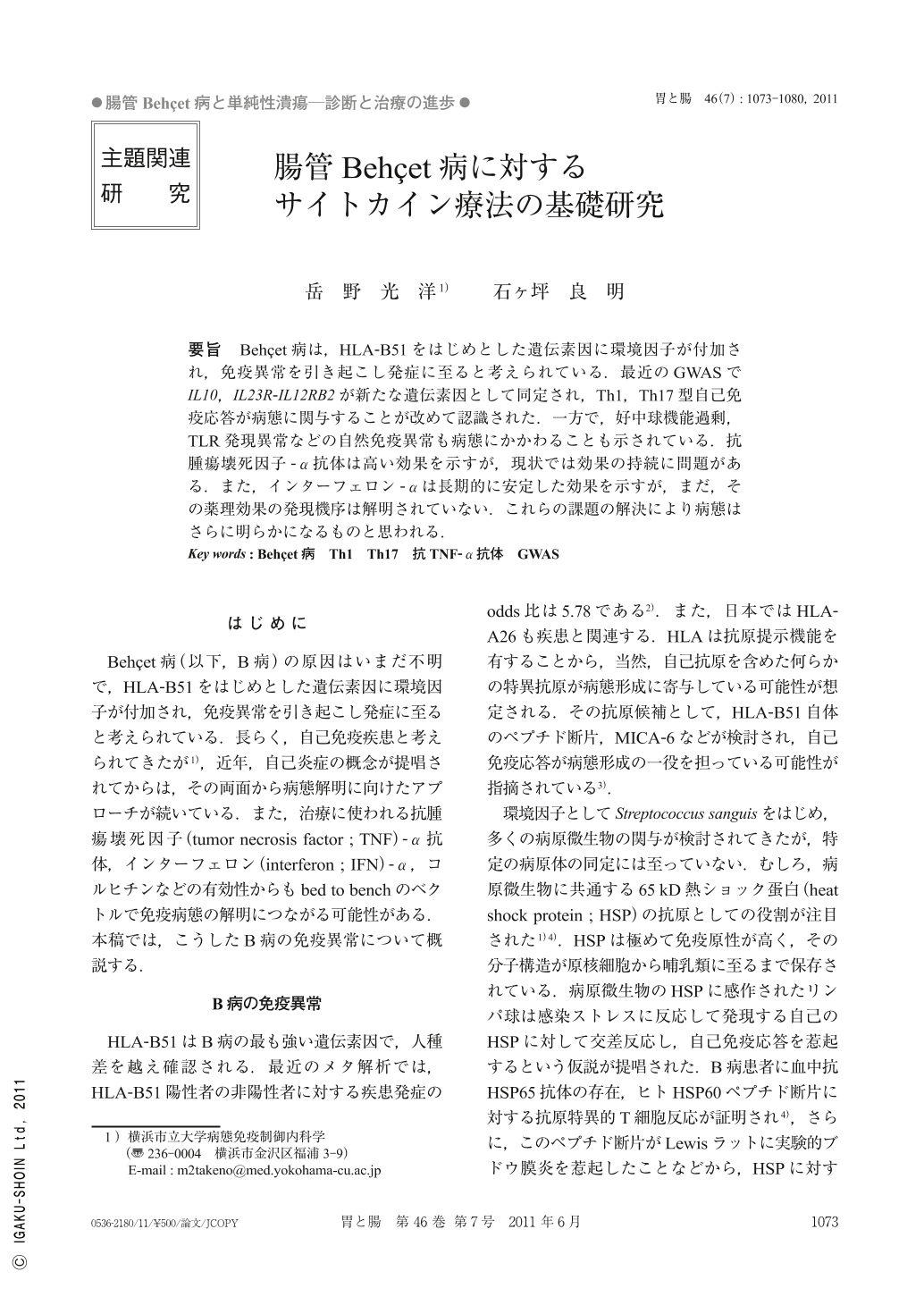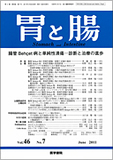Japanese
English
- 有料閲覧
- Abstract 文献概要
- 1ページ目 Look Inside
- 参考文献 Reference
要旨 Behçet病は,HLA-B51をはじめとした遺伝素因に環境因子が付加され,免疫異常を引き起こし発症に至ると考えられている.最近のGWASでIL10,IL23R-IL12RB2が新たな遺伝素因として同定され,Th1,Th17型自己免疫応答が病態に関与することが改めて認識された.一方で,好中球機能過剰,TLR発現異常などの自然免疫異常も病態にかかわることも示されている.抗腫瘍壊死因子-α抗体は高い効果を示すが,現状では効果の持続に問題がある.また,インターフェロン-αは長期的に安定した効果を示すが,まだ,その薬理効果の発現機序は解明されていない.これらの課題の解決により病態はさらに明らかになるものと思われる.
Behçet's disease is a systemic inflammatory disease of unknown cause. In addition to genetic factors such as HLA-B51, environmental factors are also involved in the immunopathogenesis of the disease. Recent genome-wide association studies identified IL10 and IL23R-IL12RB2 as novel susceptible genes for the disease, suggesting that Th1 and Th17 autoimmune responses are implicated in the disease process. Abnormal innate immune responses including neutrophil hyperfunction and aberrant expression of toll-like receptors also contribute to development of the disease.
Treatment with anti-TNF(tumor necrosis factor)-α antibody is very effective, while the effects depend on blood levels of the agent. In contrast,IFN(interferon)-α shows long-lasting efficacy without relapses, though the pharmacological mechanisms remain unclear. These clinical observations may shed light on the novel aspects of the pathogenesis of Behçet's disease.

Copyright © 2011, Igaku-Shoin Ltd. All rights reserved.


